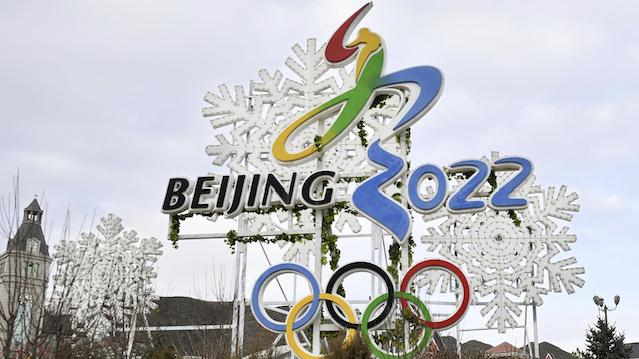The pace of the Beijing Winter Olympics is approaching. Up to now, the construction of the venue has been completed on all 15 pieces of ice in the Beijing competition area.
It is understood that the Capital Gymnasium has successfully made the first piece of ice made of carbon dioxide cross-critical direct cooling ice technology for the Beijing Winter Olympics.
Carbon dioxide cross-critical direct cooling icemaking technology is one of the most advanced icemaking technologies in winter sports venues at present, which will be widely used at the Beijing Winter Olympics.
Carbon dioxide is not a “new rich” in the field of refrigeration. In fact, because of its simplicity and low price, carbon dioxide was used as a refrigerant as early as more than 100 years ago when steam compressed refrigeration technology first appeared in Europe.
However, with the development of synthetic refrigerant technology, carbon dioxide has gradually been replaced by Freon, a synthetic refrigerant with high critical temperature and easy to liquefy. By the 1970s and 1980s, countries began to realize that the two environmental problems of ozone layer destruction and greenhouse effect were related to synthetic refrigerants, and began to stop using them.
Ma Yitai, Professor of School of Mechanical Engineering, Tianjin University: According to the Montreal Protocol signed by the international community in 1987, China has phased out refrigerants that are seriously destructive to the ozone layer by 2010, the representative is Freon R12; by 2030, China will also phase out ozone The layer has a slightly destructive refrigerant, which is representative of Freon R22.
Due to the various disadvantages of synthetic refrigerants, carbon dioxide, a “old-grade” refrigerant, has returned to people’s eyes.
As one of the components of the atmosphere, carbon dioxide will not damage the ozone layer. Although carbon dioxide is a greenhouse gas, the greenhouse effect is much lower than that of other synthetic refrigerants.

It is precisely because of this environmental protection attribute of carbon dioxide refrigeration that 7 of the 15 ice in the Beijing competition area of the Winter Olympics will adopt carbon dioxide cross-critical direct cooling ice technology. This makes the Beijing 2022 Winter Olympics the first in history to use carbon dioxide refrigerants on a large scale.Is the production principle similar to that of refrigerator?
From household refrigerators to commercial refrigeration warehouses, the core of all refrigeration activities is refrigerators. The refrigerator is mainly composed of four parts: compressor, condenser, expansion valve and evaporator. The key substance is the refrigerant, and the minimum temperature that different refrigerant can reach is also different.
Carbon dioxide can be used as a refrigerant like Freon or ammonia. Its refrigeration cycle principle is basically the same as that of ordinary refrigerants. It is a steam compression refrigeration (or heat pump) cycle, but the details are different.
Usually, there is more liquid carbon dioxide stored in the carbon dioxide liquid tank. Through the carbon dioxide pump, the temperature can be supplied with 1.5 to 2.5 times the refrigeration demand, which can ensure that the temperature at all parts of the ice rink can be more uniform. There are many compressors, and the number of openings can be controlled according to the change of refrigeration capacity in practical application. Computer-controlled electricity The sub-expansion valve can accurately control the carbon dioxide evaporation temperature according to the refrigeration capacity and the change of ambient temperature.
The Capital Stadium, which serves as a venue for short track speed skating and figure skating, completed ice production in mid-November, with an ice size of 31 meters × 61 meters. During the icemaking process, multiple carbon dioxide compressors operate at the same time.
Low-temperature carbon dioxide and ice sheet concrete are exchanged for heat in the refrigeration pipe of the ice sheet. The temperature of ice sheet concrete gradually drops to more than ten degrees below zero.
The refrigeration team constantly sprinkles water on the ice sheet and freezes it into a few millimeters of ice surface each layer. After many times The process, the ice surface with a thickness of dozens of millimeters can be frozen successfully.Save the refrigeration “second mover”
The carbon dioxide cross-critical direct cooling icemaking technology, which claims to be one of the most advanced icemaking technologies at present, is by no means a false reputation.
In addition to green environmental protection, easy to obtain and other attributes, carbon dioxide cross-critical direct cooling icemaking technology also has the advantages of temperature control accuracy, excellent ice quality and high ice efficiency.
The reason why this technology can accurately control the ice production temperature and ensure the quality of the ice surface is closely related to its direct evaporation cooling.
In the past, indirect refrigeration, that is, carrier refrigeration, was usually used in some sports venues when making ice surfaces. Indirect refrigeration refers to the process of transferring the cold amount obtained by direct evaporation cooling to the ice surface through the refrigerant to complete the cooling.
Ma Yitai introduced that its advantage is that the strength requirements for buried pipes under the ice field are very low. As long as there is no leakage of liquid, plastic pipes can usually be used. The pressure-resistant part is in the refrigeration unit.
This is a great option for temporary ice rinks, such as stage shows or winter ice carnivals. But for the ice rink used in formal competitions, its biggest problem is the inconsistent temperature on the ice.
Because substances that are usually used as refrigerants, whether salt water or ethylene glycol aqueous solution, are not exothermic at a relatively fixed temperature, there must be an inlet and outlet temperature difference in the refrigerant pipelines.
When the temperature difference between the import and export is too large, the ice will be soft and hard, and to reduce the temperature difference between the import and export, the flow of refrigerants will increase, and the energy consumption of refrigeration will increase.



